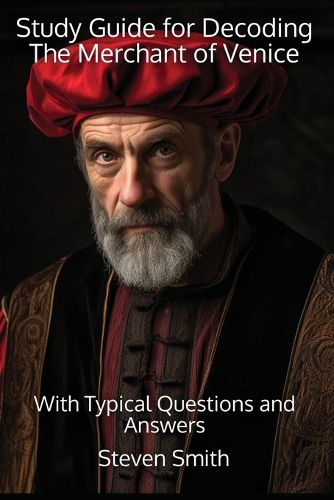Readings Newsletter
Become a Readings Member to make your shopping experience even easier.
Sign in or sign up for free!
You’re not far away from qualifying for FREE standard shipping within Australia
You’ve qualified for FREE standard shipping within Australia
The cart is loading…






This title is printed to order. This book may have been self-published. If so, we cannot guarantee the quality of the content. In the main most books will have gone through the editing process however some may not. We therefore suggest that you be aware of this before ordering this book. If in doubt check either the author or publisher’s details as we are unable to accept any returns unless they are faulty. Please contact us if you have any questions.
"Decoding The Merchant of Venice" offers insights into its plot, characters, relationships, and moral lessons. It highlights the central conflict between Antonio and Shylock, underpinned by themes of justice, mercy, and prejudice, setting the stage for the pivotal courtroom scene. Key character analyses include Shylock, depicted as both villain and victim, showcasing the play's complex portrayal of religious intolerance and justice. Antonio's deep bond with Bassanio introduces themes of friendship and sacrifice, while Portia's wit and intelligence challenge gender norms and societal expectations.
The guide also explores significant relationships such as Portia and Bassanio's love, emphasizing love's power to transcend societal barriers, and the strained father-daughter dynamic between Shylock and Jessica, reflecting cultural and religious divides. Famous lines like "All that glitters is not gold" and "The quality of mercy is not strained" are examined for thematic significance.
Central themes include the dichotomy between justice and mercy, prejudice's destructive nature, and love and friendship's complexities. The climax and resolution, centered around the courtroom scene, conclude the narrative arcs, prompting reflection on justice, mercy, and human nature. This comprehensive examination encourages a deeper understanding of the play's relevance and commentary on the human condition.
$9.00 standard shipping within Australia
FREE standard shipping within Australia for orders over $100.00
Express & International shipping calculated at checkout
This title is printed to order. This book may have been self-published. If so, we cannot guarantee the quality of the content. In the main most books will have gone through the editing process however some may not. We therefore suggest that you be aware of this before ordering this book. If in doubt check either the author or publisher’s details as we are unable to accept any returns unless they are faulty. Please contact us if you have any questions.
"Decoding The Merchant of Venice" offers insights into its plot, characters, relationships, and moral lessons. It highlights the central conflict between Antonio and Shylock, underpinned by themes of justice, mercy, and prejudice, setting the stage for the pivotal courtroom scene. Key character analyses include Shylock, depicted as both villain and victim, showcasing the play's complex portrayal of religious intolerance and justice. Antonio's deep bond with Bassanio introduces themes of friendship and sacrifice, while Portia's wit and intelligence challenge gender norms and societal expectations.
The guide also explores significant relationships such as Portia and Bassanio's love, emphasizing love's power to transcend societal barriers, and the strained father-daughter dynamic between Shylock and Jessica, reflecting cultural and religious divides. Famous lines like "All that glitters is not gold" and "The quality of mercy is not strained" are examined for thematic significance.
Central themes include the dichotomy between justice and mercy, prejudice's destructive nature, and love and friendship's complexities. The climax and resolution, centered around the courtroom scene, conclude the narrative arcs, prompting reflection on justice, mercy, and human nature. This comprehensive examination encourages a deeper understanding of the play's relevance and commentary on the human condition.